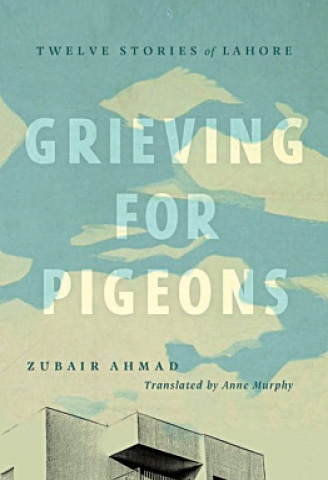FICTION: THE ESSENCE OF LAHORE
There is a saying in Punjabi which goes something like this: “Until one has seen Lahore, one has not been born.” At face value, this refers to the majestic and awe-inspiring monuments peppered throughout the historical city, as Lahore has no lack of architectural marvels and celebrated world heritage sites.
However, I believe the true essence of Lahore lies in its stories, in the heart of its communities and especially in the ebb and flow of its language. The literary masterpieces of Punjabi poets such as Bulleh Shah and Waris Shah enchant us and beguile us to this very day. Sadly, during the Partition of the Subcontinent, more than just borders were divided. It was a separation of family, culture and language. It was a bifurcation of heart and soul.
The Punjabi language has a history fraught with division and abandonment. Despite boasting around 150 million speakers globally, the language has never really achieved the official recognition it deserves. Persian was lovingly cultivated during the Mughal era and then Urdu was declared an official language during the British colonial rule, standing as such to this very day in Pakistan.
A collection of short stories translated from Punjabi to English takes readers on an immersive and poignant journey through Lahore of the 1960s and ’70s
Despite the best efforts of those looking to elevate the status of Punjabi to a national level, it has always been relegated to a provincial language. Delving deep into the landscape of Punjabi literature, one realises the richness of its stories, the passion of its narratives and the depth of its prose which always leaves us a little bit forlorn, craving for a bygone era.
Zubair Ahmad’s collection of short stories, Grieving for Pigeons: 12 Stories of Lahore, leaves us with the very same sensations of remembrance and longing. Every story harkens to days past in postcolonial Lahore and takes the reader on a poignant and immersive journey.
We sip tea at the numerous tea stalls where aspiring writers and intellectuals congregate to discuss politics, religion and literature. We witness the rise of the socialist movements of the 1960s where comrades would engage in anti-capitalist discourse and distribute pamphlets on the ills of industrialisation and on ways to create a ‘classless’ society. We celebrate the ‘hippie movement’ of the ’70s, rife with liberation and free thought. We walk down the narrow streets of the city and lament the loss of the old guard amongst the ever changing neighbourhoods — “places in this part of the city change like newly rich relatives.”
Ahmad’s narrative style has a dreamlike quality, making us feel almost as if we are trying to recall a personal memory from the deep recesses of our consciousness. Yet, at the same time, his writing style keeps us deeply rooted in reality. Many of his stories tackle the quintessential angst of coming of age and the reckless abandon of adolescence — “All that matters is youth and friendship; there is nothing more.”
This was a time when so many were caught up in the idea of revolution. But those who gathered at the YMCA and the tea stalls mostly wanted to be writers ... they fought and dismissed everything, all in one piece. Some would sit with us, just like that, and we had no idea what they were doing there. — Excerpt from the story ‘The Estranged City’
He also touches upon many more sombre and practical issues, such as patriarchy, land disputes amongst families, complicated relationships with aunts and uncles, the inescapable class system and the evils of extreme nationalism.
As we journey through the book, we notice a common theme needling its way throughout the 12 stories — that of separation: separation from one’s home, separation from loved ones and separation from a life that once was. As the author writes, “separation is a kind of unification; to remember someone is to be with them.”
It’s unfortunate that many will be unable to read Grieving for Pigeons in its original Punjabi version, titled Kabootar Banerey Te Galian, but I’m happy to report that it has been expertly translated into English by Anne Murphy, associate professor of history at the University of British Columbia, and she does so without relinquishing the stories’ original, nostalgic feel. The sound of a friend’s laughter, the smell of an old sweater your mother knit, the steam rising from a cup of hot tea — we hear, see and taste all these sensations in real time.
Further good news is that, recently, we are seeing a cultural revival of the Punjabi language. With Ali Sethi and Shae Gill’s song Pasoori being a global chart-topper and The Legend of Maula Jatt breathing new life into Pakistani cinema, the future for Punjabi as a language and as an art form is bright.
Short stories are challenging sometimes, as there is rarely a common thread that binds them into a cohesive whole, but Grieving for Pigeons differs in that regard. Every chapter has haunting memories of Partition, of that which was lost to the other side, which lives and breathes, but will never quite be yours: “It is our tragedy that we are not allowed to live in the places where we are born and become ourselves the dreams of which remain alive within us.”
Read the collection if you long for a walk down memory lane, if you desire to be overcome by a wave of nostalgia. Read it if you like to dwell in remembrance, because sometimes, that’s all we’re left with.
